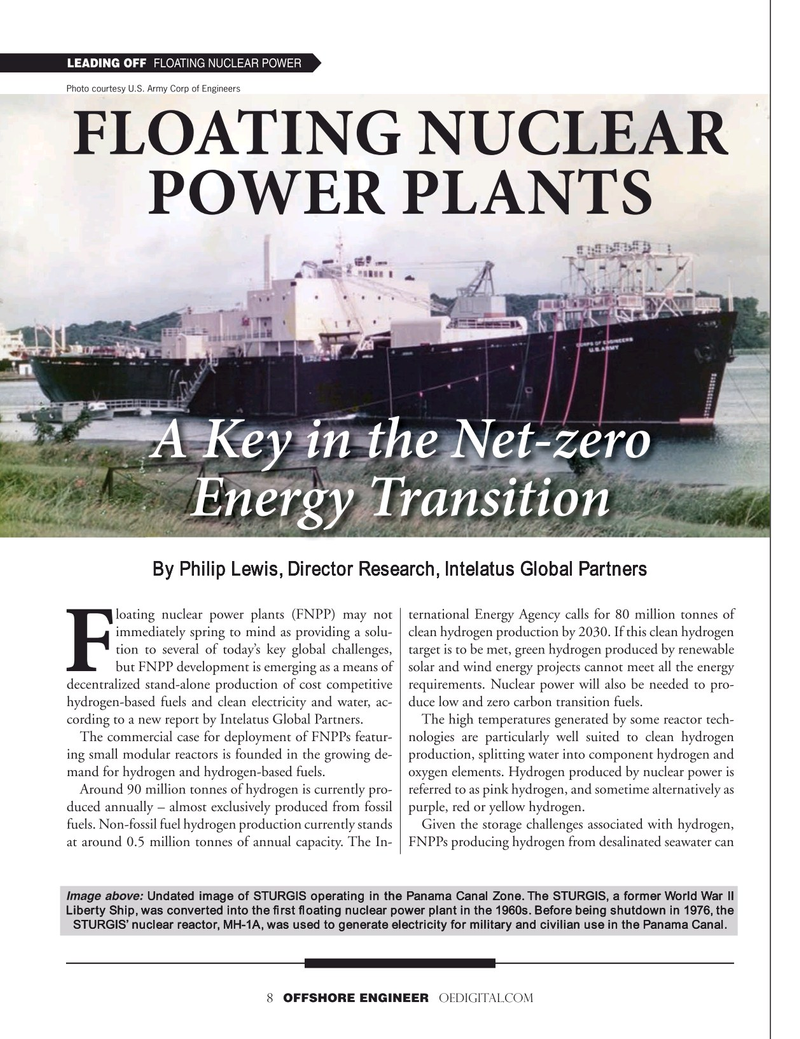
Page 8: of Offshore Engineer Magazine (Mar/Apr 2022)
Read this page in Pdf, Flash or Html5 edition of Mar/Apr 2022 Offshore Engineer Magazine
LEADING OFF FLOATING NUCLEAR POWER
Photo courtesy U.S. Army Corp of Engineers
FLOATING NUCLEAR
POWER PLANTS
A Key in the Net-zero
Energy Transition
By Philip Lewis, Director Research, Intelatus Global Partners loating nuclear power plants (FNPP) may not ternational Energy Agency calls for 80 million tonnes of immediately spring to mind as providing a solu- clean hydrogen production by 2030. If this clean hydrogen tion to several of today’s key global challenges, target is to be met, green hydrogen produced by renewable but FNPP development is emerging as a means of solar and wind energy projects cannot meet all the energy
F decentralized stand-alone production of cost competitive requirements. Nuclear power will also be needed to pro- hydrogen-based fuels and clean electricity and water, ac- duce low and zero carbon transition fuels.
cording to a new report by Intelatus Global Partners. The high temperatures generated by some reactor tech-
The commercial case for deployment of FNPPs featur- nologies are particularly well suited to clean hydrogen ing small modular reactors is founded in the growing de- production, splitting water into component hydrogen and mand for hydrogen and hydrogen-based fuels. oxygen elements. Hydrogen produced by nuclear power is
Around 90 million tonnes of hydrogen is currently pro- referred to as pink hydrogen, and sometime alternatively as duced annually – almost exclusively produced from fossil purple, red or yellow hydrogen. fuels. Non-fossil fuel hydrogen production currently stands Given the storage challenges associated with hydrogen, at around 0.5 million tonnes of annual capacity. The In- FNPPs producing hydrogen from desalinated seawater can
Image above: Undated image of STURGIS operating in the Panama Canal Zone. The STURGIS, a former World War II
Liberty Ship, was converted into the ? rst ? oating nuclear power plant in the 1960s. Before being shutdown in 1976, the
STURGIS’ nuclear reactor, MH-1A, was used to generate electricity for military and civilian use in the Panama Canal.
8 OFFSHORE ENGINEER OEDIGITAL.COM

 7
7

 9
9